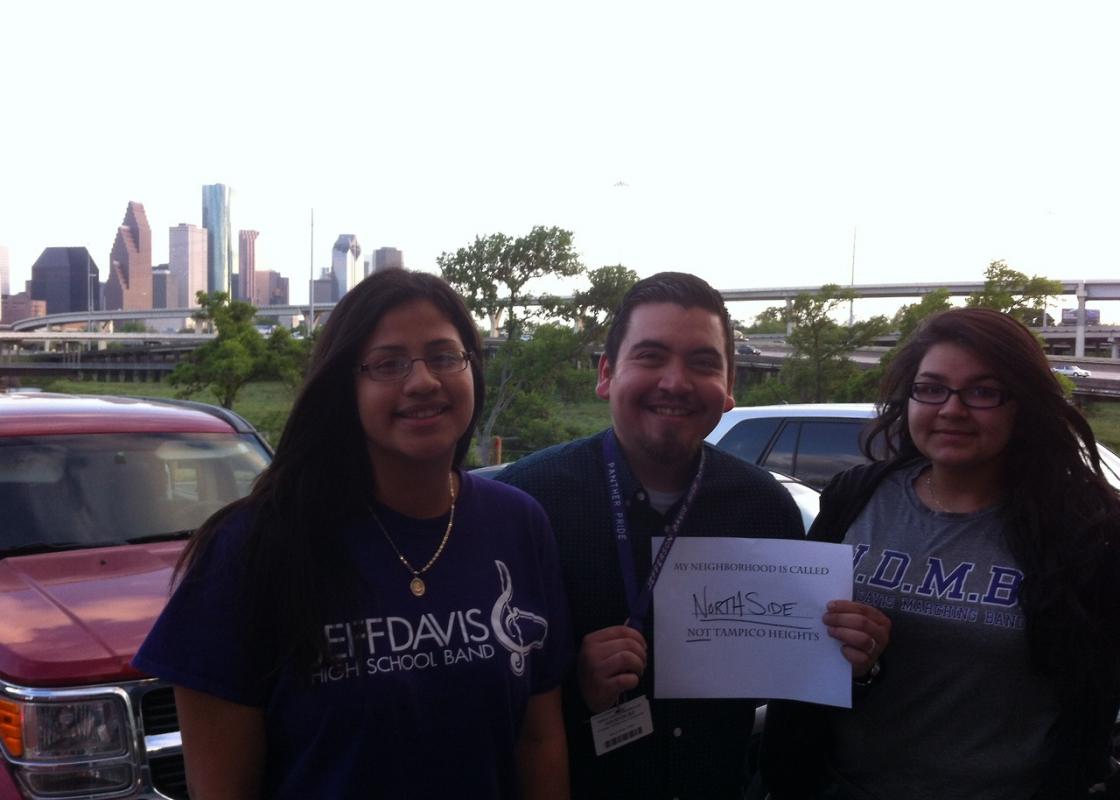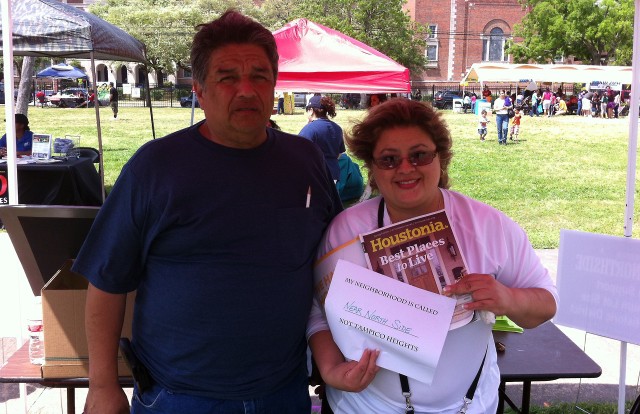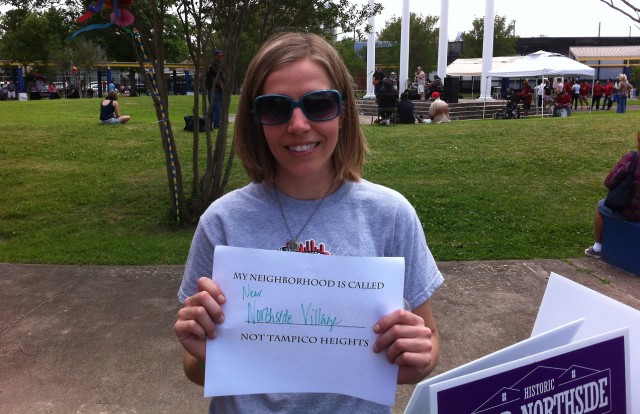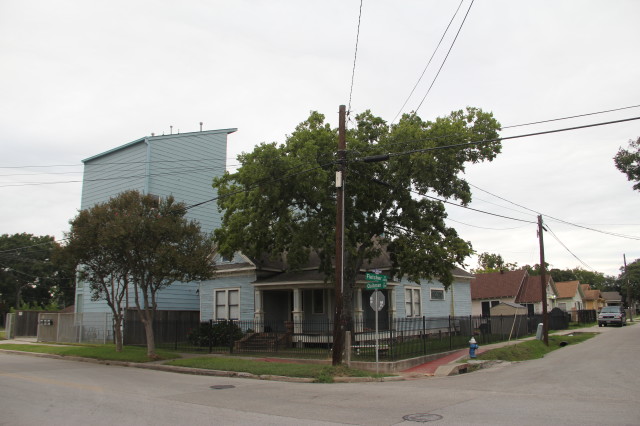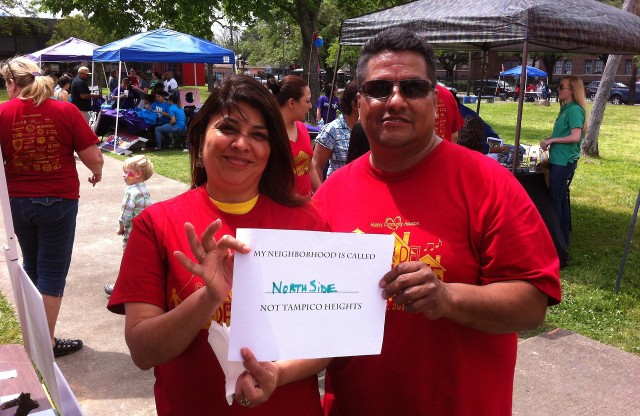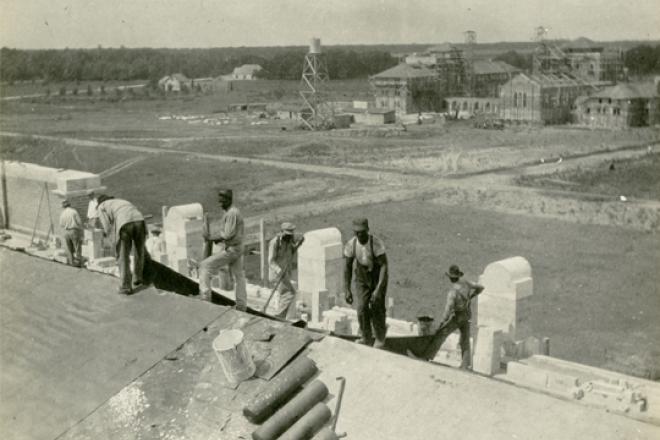Our neighborhood, the Near Northside, located east of I-45 and inside Loop 610, was recently featured in Houstonia magazine’s list of the 25 hottest and best places to live in Houston. While we agree that Near Northside is a great place to live, the sudden attention makes us nervous. What will it mean for this long-neglected, working-class, predominantly Hispanic neighborhood to be considered “hot?”
It seems that at least one result of being proclaimed “hot” is an assault on the right of self-identification. The magazine refers to us as “Northside Village” — the name of Super Neighborhood #51, which includes Lindale Park, North Central, Near Northside, Ryon, Silverdale, and North Lindale. That’s a formalized City of Houston designation that people don’t normally use to identify their own neighborhood. In fact, the author doesn’t use Super Neighborhood designations for any of the other 24 neighborhoods that are listed. The author goes on to allege that some locals refer to the Near Northside as “Tampico Heights,” though we have yet to find any Northsider who has ever heard of or used that name.
By legitimizing this invented name in print and electronic media, the article has imposed on our neighborhood an assumed identity, which is a cause of frustration and disappointment. But focusing on the name alone is missing the forest for the trees. Already developers have jumped across I-45 from First Ward and the Houston Heights to build townhouses far outside the price range of working-class people. Nearly 40 acres of the Hardy Rail yards at the southern end of the neighborhood are owned by a developer with a vision of midrise luxury housing. The neighborhood is on the brink of rapid transformation, and it is an open question who will benefit.
Of course, cities are constantly shifting and neighborhood names do change with new populations and uses over time. As big-box retail redeveloped areas adjacent to the Heights, parts of First Ward were renamed “Sawyer Heights” and portions of Rice Military were renamed “Washington Heights” to give those places newer, more consumer-friendly identities. Whatever the intention of this new neighborhood name, calling something “Heights” and encouraging urban pioneers to come over has a track record in recent times of turning neighborhoods into locations for townhouses.
The article in Houstonia participates in a terra incognita language in its introduction: “Let Houstonia be your Sacajawea, expertly guiding you through the thicket…” Northside Village (Near Northside) is presented as the next frontier for “urban pioneers.” We are hardly a wilderness waiting to be tamed.
The Northside is one of the oldest neighborhoods in Houston, with the southernmost part of the neighborhood established in the 1880s when the Hardy Rail Yards were developed by the Southern Pacific Railroad Company. The neighborhood was settled primarily by railway workers, most of whom were new immigrants, from Central and Southern Europe, Germany, and Italy. The area was part of the Fifth Ward until 1905, when the wards were abolished as a political system. As Houston continued to expand outward in all directions, the area came to be known as Near Northside because of its proximity to Downtown.
Beginning in the 1940s, Mexican-Americans and Mexican immigrants came to the neighborhood. Mexican-Americans, many returning from service in World War II and with middle-class aspirations, were now allowed to own property in the neighborhood and were able to do so because of the old homes put up for sale by the children of the European immigrants who were moving out to more distant and less diverse suburbs. By the 1960s, the area was considered a Hispanic enclave, and an influx of Mexican immigrants took residence in the Northside because of the affordability, walkability, central location, and familiar culture.
For the last half of the twentieth century, the neighborhood was largely ignored by investment — both private and public. Considered urban blight, and associated with all of the ills of inner-city living, vacant commercial spaces were seldom re-inhabited. The area still has large amounts of historic housing due, in part, to this neglect. Many houses are still intact due to the personal investment of residents.
We want to see this great neighborhood celebrated for its unique character and vibrant community. We are not against development. We encourage compatible development. There are still empty lots in the area that could be used for affordable homes instead of a string of three-story luxury townhouses. Compatible development might be more mixed-use structures along commercial corridors like North Main, Quitman, Hogan, or Fulton. We want development and investment to benefit the existing population – not just the anticipated wave of those with trackable spending power.
How do we preserve the Northside?
People in the Northside are fighting to preserve both the built fabric of their neighborhoods and the communities embedded there with the tools available in our city. Residents of one section of the Near Northside are pursuing a minimum lot size area to preserve the type of housing density that exists. Those efforts have stopped, at least temporarily, several high-end townhouse developments until the neighborhood has a chance to vote on the issue. Lindale Park is working to create minimum lot size protections for all of the households in their civic club area. There are other blocks pursuing minimum lot size protections in parts of the Near Northside and North Lindale. These efforts are very important, but difficult to carry out, requiring technical knowledge, lots of pounding the pavement, and support from 55 percent of residents.
There is a need for more affordable housing. As “urban pioneers” and developers start to move in to the Northside, new homes are built that are starkly out of reach to the current residents. Land values rise to the point where developing affordable housing becomes almost impossible. This kind of passive gentrification disperses the existing population to whatever ends of the city they can now afford, decimating the existing support structure the community once had.
The culture and history of the neighborhood need support, as well. Though there are organizations that champion the arts and culture of neighborhoods in the East End, Third Ward, and Sixth Ward (many young people from the Northside have gone to MECA for arts education for decades), Northside has few established institutions. The Sabor del Northside Festival has made a great start in celebrating the neighborhood and its accomplishments. The Church Bazaars of Saint Patrick and Holy Name Church bring together people from the neighborhoods, as well as former residents who have moved elsewhere. The Leonel Castillo Community is a brand new Harris County facility that reuses the old Robert E. Lee Elementary School building on South Street. The façade of the building was saved and incorporated into the new community center in part by neighborhood activists who objected to county plans to raze it. The building is now being operated by Neighborhood Centers, which is expanding the arts and services that are offered to the neighborhood.
Creating neighborhood blogs and gathering oral histories are important to making sure our stories get told. Shaping the coming changes will require a higher level of civic engagement, including stronger civic associations.
The neighborhood has multiple identities that sometimes overlap. We could certainly benefit from a public discussion about the identities of our neighborhood and how they are evolving. During the most recent Sabor Del Northside Festival, a booth was set up to ask festival goers to write down the name of their neighborhood. Some of the responses were photographed and compiled on a small blog (imnorthside.tumblr.com). There was no mention of the “Heights” in anyone’s response, except from people who are proud of the Northside and don’t want to be the “Heights.”
Rob Block is a resident of the Northside and pursuing a Masters of Social Work at the University of Houston. He worked for the Avenue CDC and the Northside GO Neighborhoods program (http://go-neighborhoods.org/northside/) for two years, which generated a knowledge of neighborhood issues, thoughts on strategy and love for the neighborhood and it’s residents.
Jimmy Castillo is the Civic Art + Design Collection Manager at Houston Arts Alliance and sometimes writes the blogs about the Near Northside when he gets a chance. He is a native Houstonian and a third generation Northsider. He still lives in the Northside with his wife (a fourth generation Northsider) and their two children (fifth generation Northsiders).


